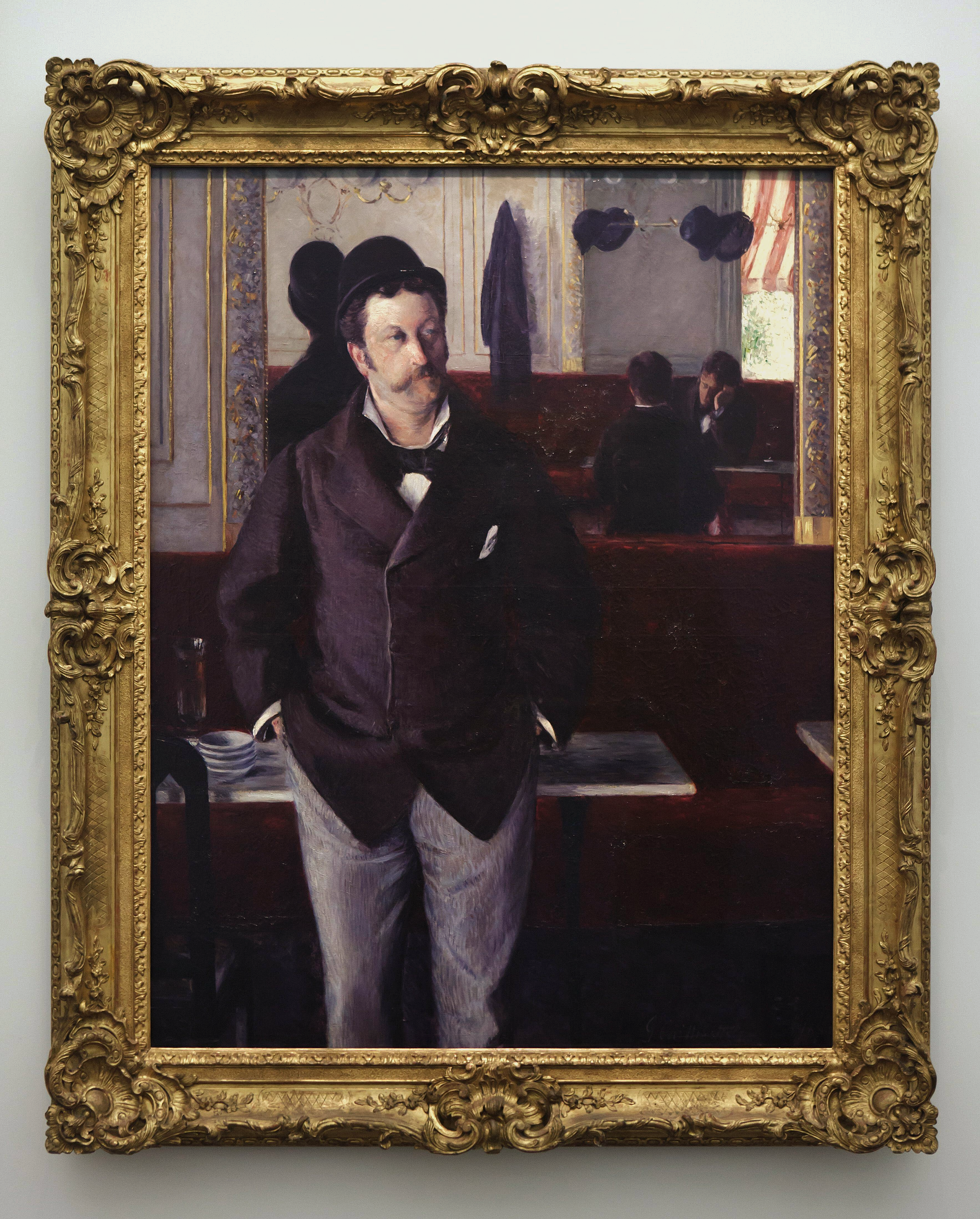
Gustave Caillebotte (France, 1848–1894)
In A Cafe
oil on canvas
153 x 114 cm
Painted in 1880
Collection of Musée des Beaux-Arts, Rouen, France
It was at the fifth Impressionist exhibition that Caillebotte presented this café scene, a painting of modern life. A life-size male figure dominates the scene. It's a model who's been painted many times, here in flabby clothes, a little dishevelled, hands in pockets, vague gaze. With his disillusioned air, he stands there like a barfly, cut off from his surroundings, his old-fashioned bowler hat screwed to the back of his head, which he hasn't bothered to take off. A set of mirrors shows in the background - but in front of him - two hats hanging from a bar - one of them a top hat - and two men playing cards or dominoes, an exclusively masculine game. The scene takes place in a fine establishment on the Parisian Grands Boulevards, around midday, as indicated by the sunny foliage and red-and-white awning in the mirror. The table next to our man holds four earthenware saucers in front of an absinthe glass, also shown in a preparatory drawing (New Haven, Yale University Art Gallery). This painting may have been seen as a manifesto against the liberalization of drinking establishments decided by the law of July 17, 1880, when absinthe was spreading its ravages... It is no less an Impressionist manifesto, whose subject, vibrant brushstrokes, clear light acting on the materials it penetrates, and play of simultaneous reflections recall Caillebotte's words: "And since we are closely attaching nature, we no longer separate the character from the background of the apartment or the background of the street...".
Like Edgar Degas in his painting L'Absinthe, Caillebotte takes up the theme of the Parisian café. But it's no longer a Montmartre bohemian haunt like the Nouvelle-Athènes, it's an establishment on the Grands Boulevards, with gilded chandeliers and frames, red velvet banquettes and copper coat hooks, frequented by a male clientele. The use of a mirror behind the protagonists enlarges the scene and gives it depth.
However, it doesn't look out onto an enclosed space, occupied by marble tables and customers, but opens out, beyond the players, into a sunny space, dimmed by the wide-striped blind. A standing man, firmly planted on his legs, hands in his pockets, is on his fourth drink (as shown by the saucers stacked on the left). In the background, two men are playing cards or chess. The composition, which underpins the anecdotal scene, is rigorously constructed. Caillebotte placed the black vertical of a coat hanging on a peg in the exact center of his painting, as if to separate the players in the background from the man with the massive presence. He doesn't sit his figure behind a table, but in front of it, head-on. And far from wishing to denounce the evils of alcoholism, Caillebotte sticks to a pure snapshot.

Café de le Nouvelle Athènes, Paris (before 1900)










